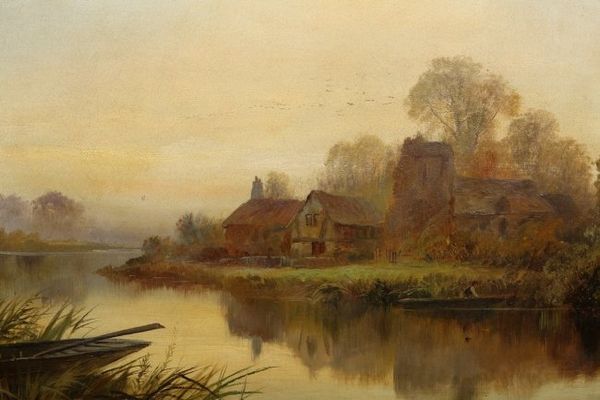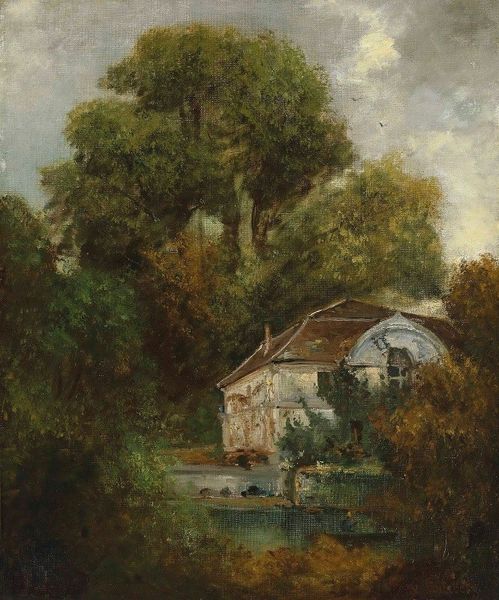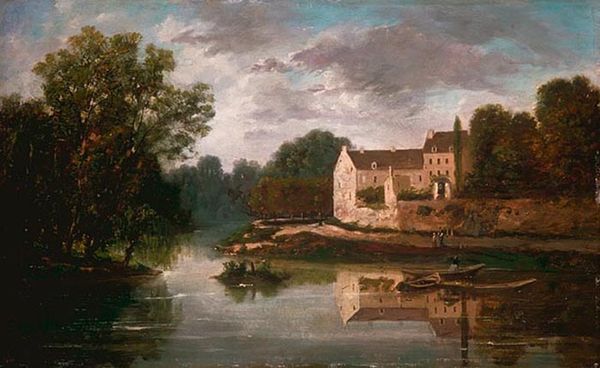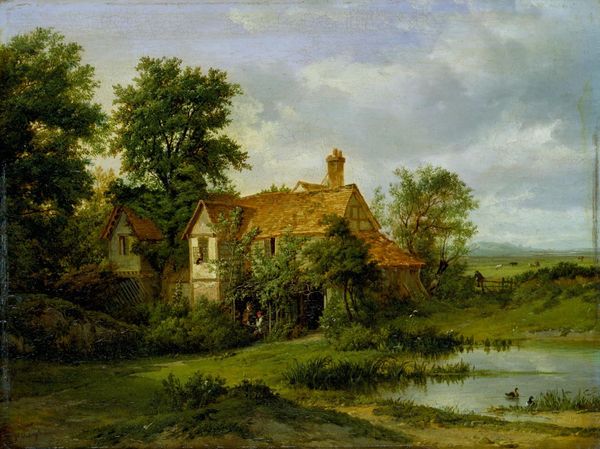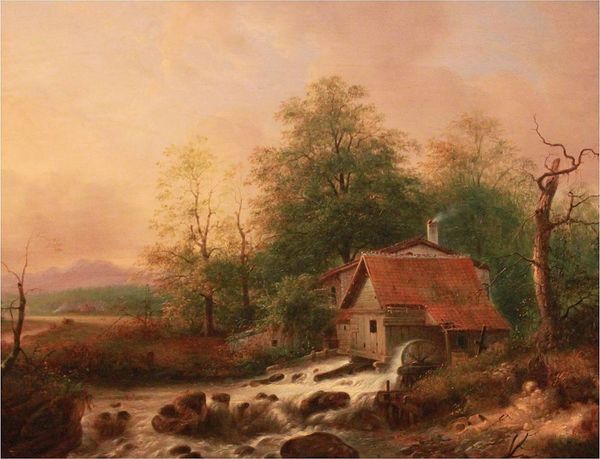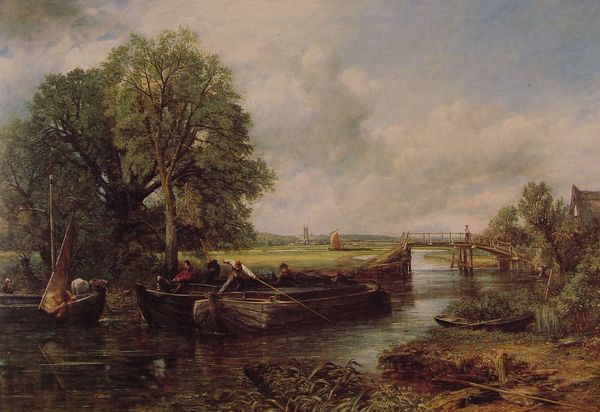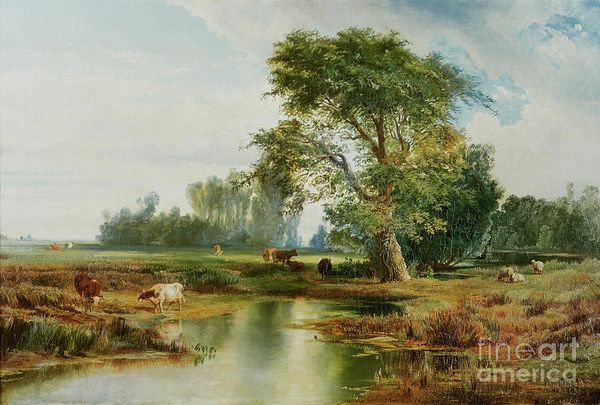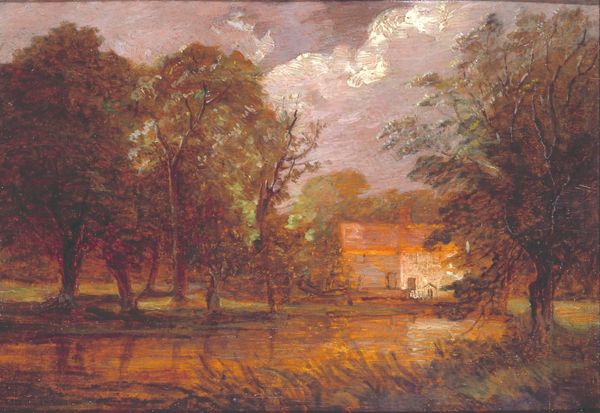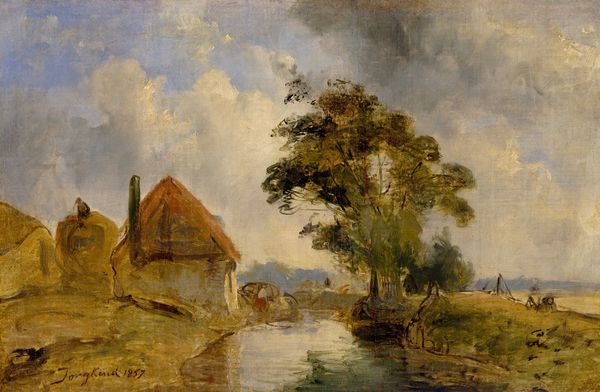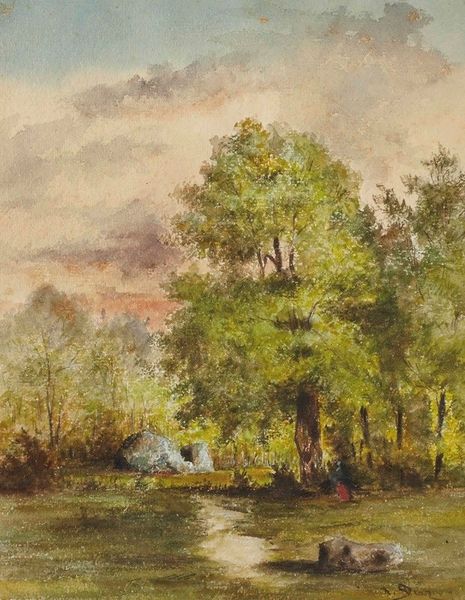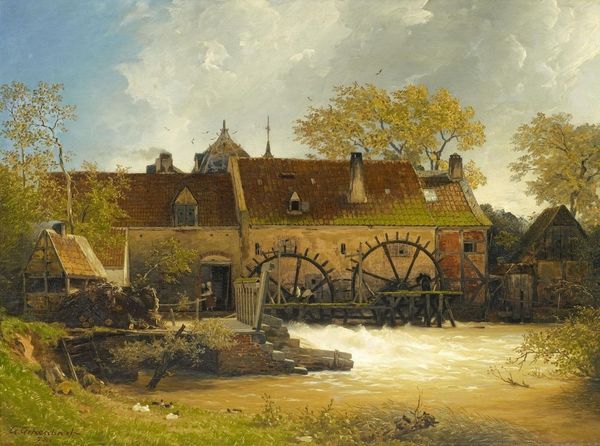
painting, oil-paint
#
painting
#
oil-paint
#
landscape
#
romanticism
#
water
#
genre-painting
#
realism
Copyright: Public domain
Curator: Looking at this piece, I feel instantly transported to a very quiet, reflective place. There's almost a dreamlike quality to it, softened by the light and the way the water mirrors the scene. It’s quite serene, isn’t it? Editor: Absolutely, but this serenity masks certain issues related to representation. The work, an oil painting entitled "Landscape" by William Gilbert Foster, situates us within a Romantic and Realist tradition where the relationship between people and nature is presented, but within certain power dynamics. The very idea of 'landscape' carries colonial weight, representing possession, control, and resource extraction. Curator: Hmm, I see your point. But stepping back from the grand narrative for a moment, I'm struck by how Foster captures the light filtering through the trees and reflecting on the water. It almost feels like a memory being recalled, hazy but full of a strange luminescence. Editor: Yes, technique-wise, the atmospheric perspective is skillfully achieved, creating depth and distance, softening details and muting colors. But who are the figures we are meant to overlook? Who is represented and who is obscured in favor of this serene "nature"? The labor and the lives tied to this land are made secondary. Curator: You're right to bring attention to that absence. Perhaps that small figure in the boat, almost swallowed by the scene, is meant to represent that connection, that labor, though rendered quite small and insignificant. The way the ruin is covered by foliage could also be a subtle comment about time, erasure, and the relentless power of nature reclaiming what was once human-made. Or a deliberate erasure that reinforces a specific view of rural life, where labor is conveniently overlooked? Editor: I think both are intertwined. These genre paintings create and perpetuate a sense of idyllic country living that is a fantasy for some, while being lived experiences with embedded economic and historical realities for others. It prompts the questions of how landscape as genre helped to naturalize class divisions through beauty, or rather, a very specific concept of it. Curator: Well, whatever the intention, the painting certainly makes you think about more than just pretty scenery! It's that tension between what's immediately apparent and the deeper currents running beneath the surface that makes it so engaging. Editor: Exactly. It urges us to deconstruct what feels comfortable. Art isn't passive; it challenges, implicates, and asks that we become aware of our own perspectives.
Comments
No comments
Be the first to comment and join the conversation on the ultimate creative platform.
